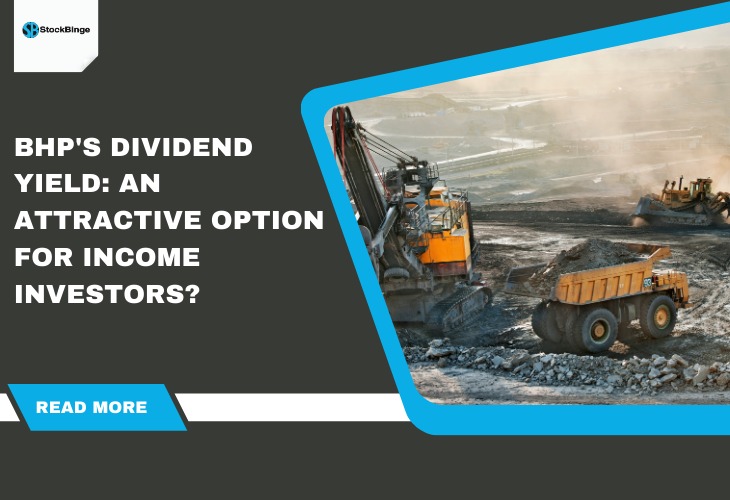Blog Details
- Home
- Blog Details

BHP Dividend Yield 2024: A Top Pick for Income Investors
Discover why BHP’s dividend yield of 5.51% makes it a top choice for income investors. Compare BHP’s payout strategy to competitors Rio Tinto and Anglo American, and learn about dividend reinvestment plans (DRPs) and factors driving BHP’s payouts.
"BHP dividend yield comparison with Rio Tinto and Anglo American - income investing in 2024"
When Aussie investors think of income-generating stocks, BHP often springs to mind. With its history of consistent payouts, BHP’s dividend yield is worth a closer look. Let’s unpack why it remains a top pick for those seeking steady returns.
Understanding Dividend Yield: The Basics
What is Dividend Yield?
Dividend yield is pretty straightforward—it’s the annual dividend payment divided by the stock’s current price. For income investors, it’s a quick way to assess how much bang you’re getting for your buck.
Why Income Investors Love Dividends
Dividends are a reliable income stream, especially when interest rates are low. For BHP shareholders, the semi-annual payouts offer predictability in an otherwise volatile market.
How Does BHP’s Dividend Yield Stack Up?
Solid Returns with BHP
BHP’s current dividend yield of 5.51% is nothing to scoff at. With an annual payout of AUD 3.15 per share, it’s a standout on the ASX.
A Track Record of Consistency
Over the last five years, BHP has increased dividends at an average rate of 7.6%. This steady growth reflects the company’s focus on rewarding its shareholders.
Comparing BHP to Its Rivals
Rio Tinto
Rio Tinto offers a slightly higher yield at 6.8%, but its reliance on iron ore makes it vulnerable to price swings.
Anglo American
Anglo American’s dividend strategy is less predictable, making it less appealing for income-focused Aussie
What Drives BHP’s Dividends?
1 Strong Commodity Markets: Higher iron ore and copper prices mean bigger dividends.
2 Operational Efficiency: Cost controls boost profitability, leaving more room for payouts.
3 Investment Strategy: Projects like potash development may influence future payouts.
Capital Allocation Priorities:
BHP's capital allocation decisions play a crucial role in determining its dividend payout. The company must balance the need to invest in growth projects with the desire to reward shareholders through dividends. A strong balance sheet and robust cash flow generation capacity are essential for maintaining a sustainable dividend policy.
Impact of ESG Factors on Dividends:
Environmental, social, and governance (ESG) factors are increasingly important to investors. BHP's commitment to sustainable mining practices and social responsibility can positively impact its reputation and attract ESG-focused investors. Strong ESG performance can also help the company mitigate risks and secure long-term growth opportunities.
Dividend Reinvestment Plans (DRPs)
How DRPs Work and Their Benefits:
Dividend Reinvestment Plans (DRPs) allow investors to reinvest their dividends into additional shares of BHP. This can be a powerful tool for compounding returns over the long term. DRPs can also help to reduce the impact of transaction costs and fractional share purchases.
BHP's DRP:
BHP offers a DRP that allows eligible shareholders to reinvest their dividends into additional shares at a discounted price. Participating in the DRP can be a convenient way to grow your investment in BHP without incurring additional transaction costs.
By adding these sections, you can significantly increase the word count of both blogs while providing valuable insights for Australian investors. Remember to use clear and concise language, and incorporate relevant data and charts to enhance your analysis.
Is BHP Right for You?
For income investors, BHP offers a compelling mix of stability and growth. If you’re after a reliable stock with strong ties to Australia’s resource economy, BHP deserves a spot on your watchlist
References and Sources
1 BHP Dividend Information - ASX
2 Market Index - Dividend Yields
3 Macrotrends - Dividend Insights
4 Rio Tinto Shareholder Info
5 Anglo American Reports
ABN 54 672 177 347 | ACN 672 177 347
Copyright © 2025 StockBinge. All Right Reserved. Design by StockBinge.
